Table of Contents
Unveiling the Charms: Why Jabalpur is Famous for Its Enchanting Landmarks and Cultural Heritage
Jabalpur, a city where history whispers from every corner and nature showcases its finest art, is a place that tugs at the heartstrings of travelers and locals alike. Let’s embark on an emotional journey to explore why Jabalpur is more than just a city; it’s a feeling, an experience that stays with you long after you’ve left.
Jabalpur, the heart of India, is a city that dances to the rhythm of its rivers, its temples, and its timeless tales. Every street, every turn, holds a different melody and a different emotion, enticing you to explore more. It’s a place where the past and the present mingle effortlessly, creating a mosaic of experiences that resonate with your soul.
Bedaghat Waterfall Jabalpur: Nature’s Art
Behold the Bedaghat Waterfall, where the waters of the Narmada River cascade down with such grace and power that it takes your breath away. The sight of water plunging over the beautifully sculpted marble rocks is akin to watching a natural ballet, where every drop plays its part in a mesmerizing dance. The way the sunlight kisses the cascading waters, creating rainbows in the mist, is a sight to behold, a memory to cherish. It’s not just a waterfall; it’s a living, breathing artwork of nature, constantly evolving, constantly amazing.
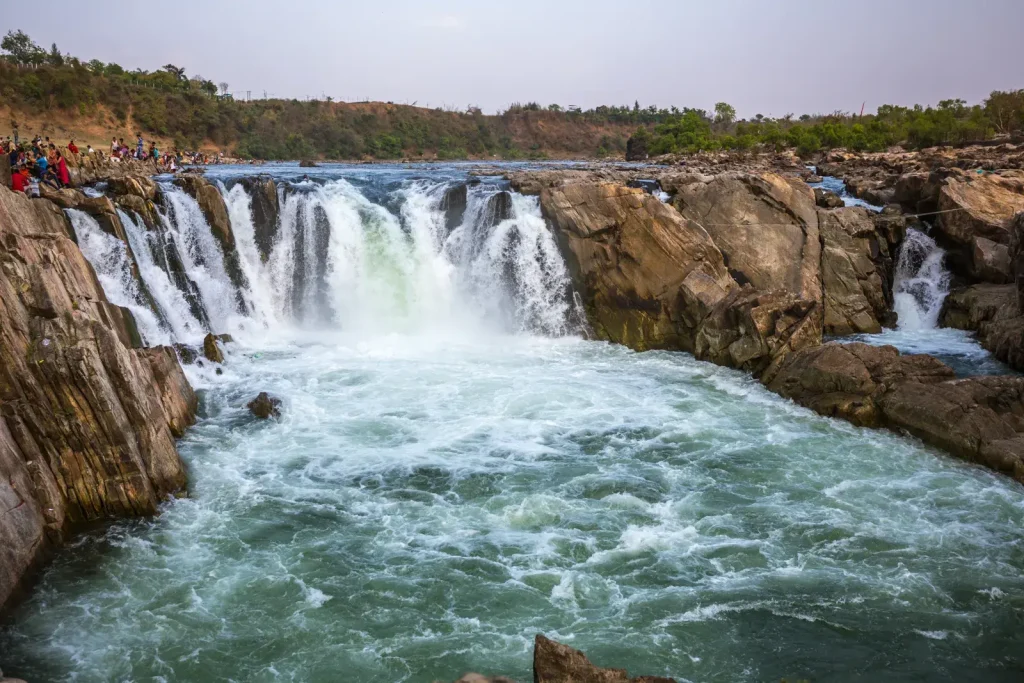
Tripur Sundari: Divine Beauty
Nestled in the heart of Jabalpur is Tripur Sundari, a temple that embodies the divine essence of feminine energy. This sacred site is more than just a structure of worship; it’s a spiritual oasis that fills you with a sense of peace and reverence. The calm atmosphere and the soft chants that reverberate within the walls welcome you as you enter, creating an ethereal experience. The temple, with its intricate architecture and spiritual significance, is a testament to the city’s rich cultural tapestry, offering a glimpse into the soul of Jabalpur’s religious heritage.

The Balancing Rock Phenomenon
Jabalpur’s Balancing Rock is a marvel that challenges the laws of physics. This colossal rock, defying gravity, stands precariously balanced on another, as if nature itself decided to play a game of balance. The rock, with its unique formation, evokes a sense of wonder and curiosity. It’s a symbol of resilience, a natural sculpture that has withstood earthquakes and the test of time. Witnessing this rock is like observing nature’s own magic trick, reminding us of the incredible mysteries that our planet holds.
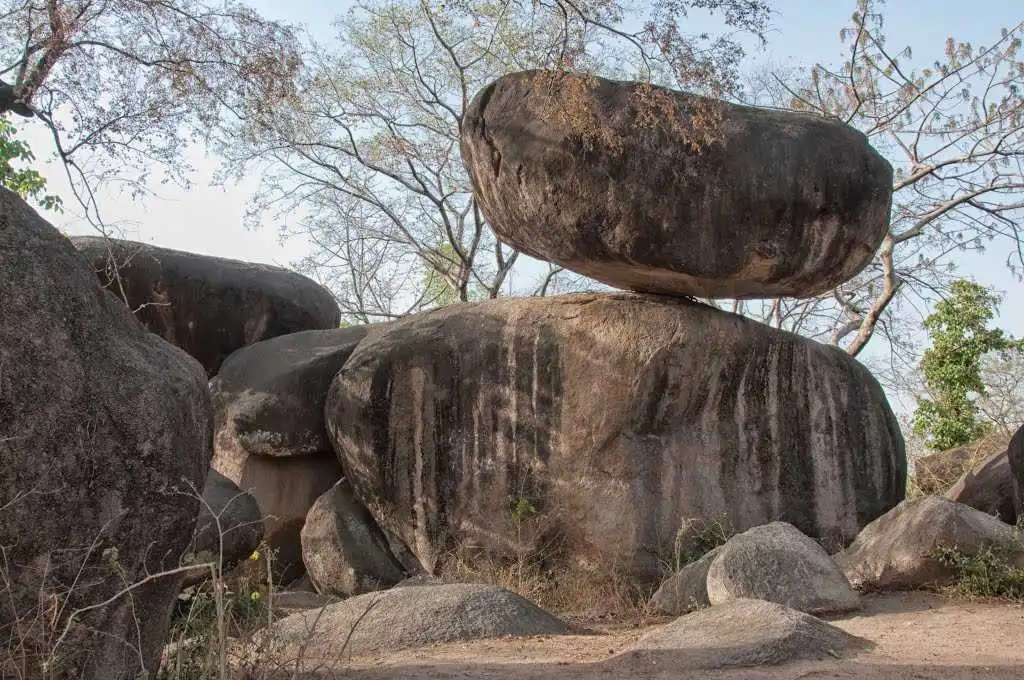
Chausath Yogini Temple: Ancient Wonders
The Chausath Yogini Temple, perched atop a hill, is a doorway to the past, offering a panoramic view of Jabalpur’s landscape. This ancient temple, dedicated to the 64 Yoginis, is a marvel of Indian architecture and spirituality. Each stone and sculpture here tells a story of devotion, artistry, and the rich traditions of the era it was built in. Walking through this temple is like walking through the pages of history, where each turn reveals a new chapter of the past, filled with myths, legends, and the enduring strength of faith.

Madan Mahal Fort: A Historic Sentinel
Madan Mahal Fort, standing atop a rocky hill, is a sentinel guarding the tales of Jabalpur’s regal past. This historic fort, with its robust walls and strategic location, offers a glimpse into the lives of kings and warriors. As you explore its ruins, you can almost hear the echoes of battles fought and victories celebrated. The fort, with its breathtaking view of the city, is a place where history comes alive, where every stone has a story to tell, a story of glory, intrigue, and the passage of time.

Rani Durgawati Museum: A Cultural Voyage
The Rani Durgawati Museum is a journey through the cultural heart of Jabalpur. This museum, named after the brave queen Durgawati, is a treasure trove of artifacts, paintings, and sculptures that speak volumes about the region’s rich heritage. Each exhibit here is a window into the past, offering insights into the lives, beliefs, and artistry of the people who shaped this land. The museum, with its diverse collection, is a celebration of history and culture, a place where the past is preserved and revered.

High Court of Madhya Pradesh: Architectural Marvel
The High Court of Madhya Pradesh in Jabalpur is not just a temple of justice; it’s an architectural gem. This building, with its majestic design and historical significance, stands as a symbol of India’s legal heritage. The grandeur of its structure and the intricate details of its façade reflect the colonial influence and the importance of the judicial system in India. Walking through its halls, one can feel the weight of decisions made, the lives changed, and the pursuit of justice that defines this venerable institution.
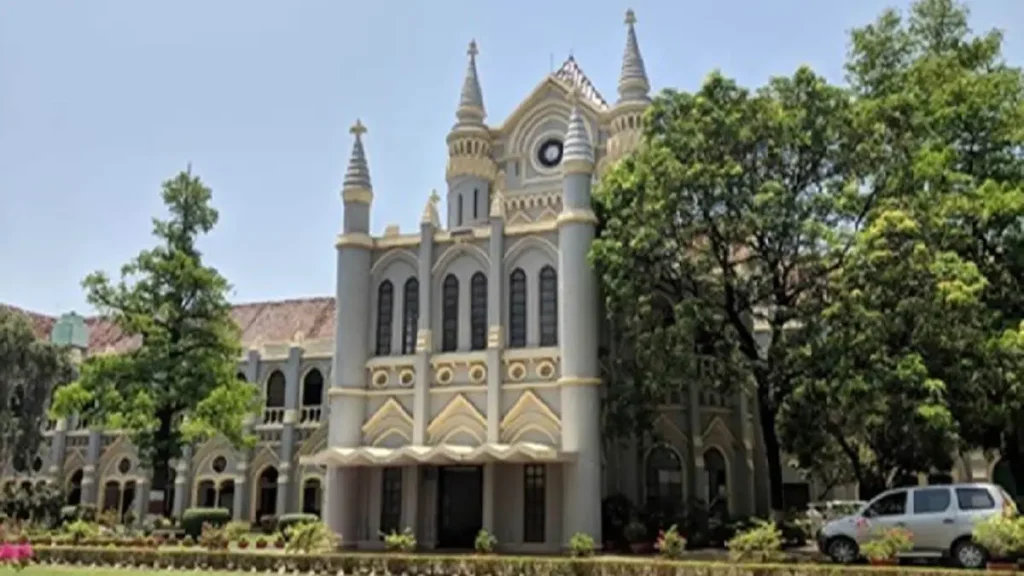
Narmada River: Lifeline of Jabalpur
The Narmada River, flowing through Jabalpur, is the city’s lifeline, a source of sustenance, spirituality, and beauty. This river, considered sacred by many, is not just a body of water; it’s an integral part of the city’s identity. The way it winds through the landscape, nurturing the land and its people, is a testament to its significance. The riverbanks, alive with the chants of pilgrims and the laughter of children, are a celebration of life, a place where stories are shared and traditions are kept alive.

Gwarighat: A Spiritual Retreat
Gwarighat, a tranquil spot along the banks of the Narmada River, is a spiritual sanctuary. Here, the hustle of the city gives way to the gentle lapping of the river’s waters and the peaceful aura of devotion. This place, with its temples and ashrams, is a refuge for those seeking solace and spiritual connection. The evenings at Gwarighat, with the setting sun casting a golden glow on the river and the air filled with the scent of incense and the sound of prayers, are moments of pure bliss, a balm for the soul.
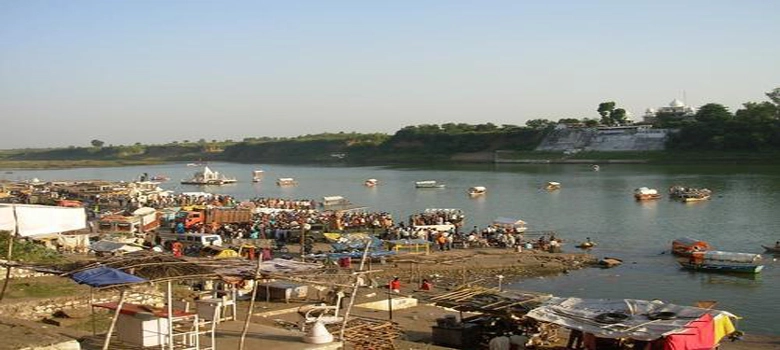
Dumna Nature Reserve: Wild Wonders
Dumna Nature Reserve is a wild wonderland, a place where nature shows off its most vibrant colors and sounds. This reserve, a haven for wildlife and nature enthusiasts, is a mosaic of lush forests, sparkling lakes, and diverse fauna. The thrill of spotting a leopard in the wild, the joy of hearing the melody of birds, and the tranquility of walking through the woods are experiences that rejuvenate the spirit. Dumna is not just a nature reserve; it’s a celebration of the natural world, a reminder of the beauty and serenity that nature offers.
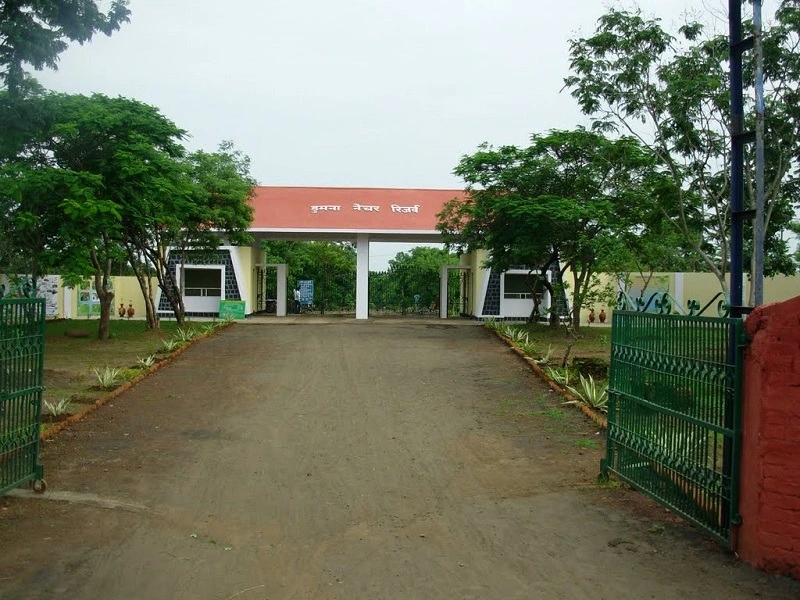
Conclusion
In the heart of India, there lies a city that resonates with an enchanting blend of history, nature, and culture. This city is Jabalpur, and it stands as a testament to the question, “Why Jabalpur is Famous?” As we draw our journey to a close, it’s essential to reflect on the myriad reasons that make Jabalpur a city worth cherishing, a city that answers the query, “Why Jabalpur is Famous?” not just once but in countless ways.
Why Jabalpur is Famous lies in its ability to weave a tapestry of emotions through its natural and cultural landmarks. The Bedaghat Waterfall is a prime example. Here, the Narmada River cascades through marble rocks in a symphony of natural beauty, answering “Why Jabalpur is Famous” with each splash and rainbow created in the mist. It’s a place where nature’s artistry is displayed in full glory, compelling visitors to pause and absorb the serene majesty of this natural wonder.
Moving beyond nature’s canvas, “Why Jabalpur is Famous” is echoed in the corridors of the historical Madan Mahal Fort. Each stone of this ancient fortress tells a tale of bygone eras, of battles and legends that shaped the destiny of this region. The fort stands as a guardian of history, offering breathtaking views of the city and reminding us again, “Why Jabalpur is Famous” for its rich and vibrant past.
The spiritual heart of Jabalpur also contributes to “Why Jabalpur is Famous.” The Chausath Yogini Temple, with its ancient sculptures and mystical aura, offers a glimpse into the city’s spiritual depth. It’s a place where history and devotion intersect, providing a tranquil escape and a profound connection to the divine. This temple is not just a structure of worship; it’s a beacon of faith and tradition, further answering “Why Jabalpur is Famous.”
In the cultural sphere, “Why Jabalpur is Famous” finds its voice in the Rani Durgawati Museum. This repository of art, history, and culture showcases the rich heritage of Jabalpur, from ancient artifacts to modern masterpieces. The museum serves as a cultural bridge, connecting the past with the present, and provides yet another compelling answer to “Why Jabalpur is Famous.”
The city’s judicial legacy, encapsulated in the High Court of Madhya Pradesh, adds another layer to “Why Jabalpur is Famous.” This architectural marvel, with its colonial influences and stately presence, is not just a building; it’s a symbol of the city’s commitment to justice and order. It stands as a proud reminder of Jabalpur’s place in the annals of India’s legal history.
When we ponder “Why Jabalpur is Famous,” the Narmada River offers its own unique answer. This lifeline of Jabalpur is more than a river; it’s a source of life, spirituality, and natural beauty. The riverbanks, bustling with activity and steeped in tradition, tell a story of a city deeply connected to its natural environment.
The question, “Why Jabalpur is Famous,” finds a serene answer in Gwarighat. This peaceful locale, with its spiritual ambiance and picturesque setting, provides a space for reflection and contemplation. It’s a testament to the city’s ability to offer tranquility amidst the chaos of life.
Lastly, “Why Jabalpur is Famous” resonates strongly in the Dumna Nature Reserve. This haven of biodiversity is a celebration of the natural world, showcasing the untamed beauty of Jabalpur’s flora and fauna. It’s a place where the harmony of nature is on full display, adding to the city’s allure and charm.
In conclusion, “Why Jabalpur is Famous” is not just a question but an invitation to explore and experience the multifaceted beauty of this remarkable city. From its natural wonders to its historical landmarks, from its spiritual sites to its cultural treasures, Jabalpur offers a mosaic of experiences that resonate deeply with the heart and soul. Each aspect of the city contributes to the tapestry of reasons “Why Jabalpur is Famous,” making it a destination that captivates, inspires, and leaves an indelible mark on all who visit.
FAQs About Jabalpur
Q: What emotional experience does the Bedaghat Waterfall offer visitors?
The Bedaghat Waterfall offers an emotional journey that transcends mere sightseeing. As you watch the majestic waters cascade over the marble rocks, you feel a sense of awe and wonder, akin to witnessing nature’s own masterpiece. It’s a place where the heart feels lighter and the mind is filled with the serene beauty of nature’s artwork.
Q: How does the Tripur Sundari temple connect visitors to Jabalpur’s spiritual heritage?
Visiting the Tripur Sundari temple is like stepping into a realm of divine tranquility. The temple’s serene ambiance, coupled with the spiritual chants that echo through its walls, offers a profound connection to the city’s deep-rooted religious beliefs. It’s an emotional experience that enriches the soul, providing a sense of peace and reverence.
Q: What makes the Balancing Rock a unique attraction in Jabalpur?
The Balancing Rock in Jabalpur is unique because it symbolizes nature’s mystery and resilience. This geological wonder evokes a sense of curiosity and amazement as visitors ponder over how such a massive rock can defy gravity. It’s a testament to the incredible natural phenomena that our planet harbors, stirring feelings of wonder and respect for nature’s creations.
Q: What historical significance does Madan Mahal Fort hold for visitors?
Madan Mahal Fort is not just an architectural marvel but a portal to Jabalpur’s glorious past. Exploring its ruins is an emotional journey through time, where each stone tells a story of royal sagas, ancient battles, and historical events. The fort provides a poignant reminder of the city’s rich heritage, evoking feelings of nostalgia and admiration for the bygone era.
Q: How does visiting GWARIGHAT enrich the experience of being in Jabalpur?
isiting Gwarighat enriches your Jabalpur experience by offering a serene and spiritual retreat. The calmness of the Narmada River, combined with the sacred aura of the temples and ashrams, provides a soulful respite from the hustle and bustle of everyday life. It’s an emotionally fulfilling experience that connects you with the spiritual essence of the city, offering moments of reflection and inner peace.
Q: What unique experiences does Dumna Nature Reserve offer nature lovers?
Dumna Nature Reserve is a paradise for nature lovers, offering a vibrant tapestry of flora and fauna. The reserve provides a unique experience of being up close with wildlife in their natural habitat. The thrill of spotting exotic animals, the tranquility of the lush greenery, and the melodious chorus of birds create an emotionally enriching experience, reminding us of the serene and untamed beauty of nature.
Q: Why is the High Court of Madhya Pradesh considered an architectural marvel?
The High Court of Madhya Pradesh is considered an architectural marvel due to its stunning blend of colonial and Indian design elements. The grandeur of its structure and the intricacy of its design evoke feelings of awe and admiration. It stands as a proud symbol of India’s legal heritage, offering an emotionally resonant experience that blends the majesty of architecture with the gravitas of justice.
Q: What emotional connection do locals and visitors feel with the Narmada River?
The Narmada River holds a special place in the hearts of both locals and visitors. It is not just a river but a symbol of life, spirituality, and sustenance. The emotional connection people feel with the river is profound; it’s a source of solace, inspiration, and joy. The river’s presence is a constant reminder of nature’s generosity and the deep-rooted cultural and spiritual bonds that tie people to this sacred water body.
Q: How does the RANI DURGAWATI MUSEUM contribute to understanding Jabalpur’s culture?
The Rani Durgawati Museum serves as a gateway to understanding Jabalpur’s rich cultural and historical tapestry. Each artifact and exhibit in the museum tells a story of the city’s past, offering an emotional journey through its art, history, and traditions. The museum is a place of learning and discovery where one can feel a deep sense of connection to the cultural heritage and historical depth of Jabalpur.
Q: What makes Chausath Yogini Temple a must-visit destination in Jabalpur?
The Chausath Yogini Temple is a must-visit destination because it’s not just a temple; it’s a historical treasure. The temple offers a unique blend of spirituality, art, and history. Visitors are often overwhelmed by the emotional depth of the ancient sculptures and the panoramic view of Jabalpur, which together create a tranquil and introspective atmosphere. It’s a place that encapsulates the essence of the city’s spiritual and architectural legacy, making it an unforgettable experience.
Also Read: ECG Technician Course in India: Exploring More Details 2024
